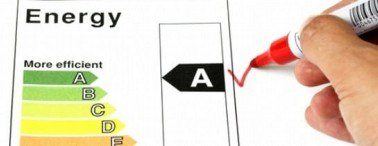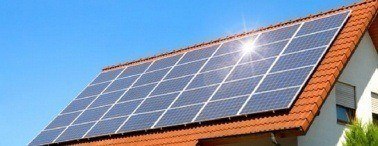
Most Canadian homes are heated by natural gas or oil and are feeling the effects of a spike in price for these home heating standards. There is no choice for most homeowners and renters but to lower their thermostats and put on an extra sweater.
In a lot of cases this is not a bad idea because people tend to keep their homes too hot as it is. This practice evolved during the long era of cheap and plentiful; fossil fuel., the same span of time which saw huge chromed, monsters being rolled off the auto production lines. Now, if they never knew it before, most Canadians are aware that the days of inexpensive oil and gas for home heating are over. And the homebuilders are also taking note.
Inefficient Home Building Styles
The main problem for homeowners is not that the price of fuel is getting outrageously high but that the homes are not properly built. To put it bluntly, the standard Canadian is a money pit which leaks energy out a multitude of portals. This was worse a hundred years ago when homes were built without insulation in the walls or attic. In these homes there were usually 2 or 3 room coal-fired room heaters in the areas where people would gather: parlour, living room and upstairs foyer, The kitchen was usually the best place to be because the stove was kept hot all winter.
However, even five years ago builders were still cranking out “McMansions†at a feverish pace, huge homes which required sometimes two furnaces to completely heat. This corrupted way of thinking was based on the fact the natural gas would always be cheap and plentiful. That was not forward thinking.
Luckily, many builders are taking course which involve making the home more efficient from the foundation right up to the roof peak. And these are the companies that will not have to change horses in mid-stream when the old style of building finally leaves the planet.
Green Home Ideas
The Lot
The old way of doing things revolved around a developer carving out a series of square lots on a piece of paper, making a road through and then calling it a subdivision. The homes were placed exactly in line on the lot as per the covenants and each building had to look the same.
The new builder looks at a lot and draws up a plan to position a structure on that lot to take advantage of the positive features and to minimize the negative ones. For example, he or she will try to point the house in a south position - or a few degrees either way - to take advantage of the winter sun's heat energy and to negate the summer sun's heat. Then the north side of the home will be minimized while the south side will include most of the windows. In many areas the covenants will not allow this but attitudes are changing each time the price of a barrel of oil jumps $10.
2. The House
Logs: These were among the first structural material and studies have shown that wood has leas than 1.5 r-value per inch which makes an 8†log less than 12 while a fibreglass-batt wall is double that. However, R-value is not the only determining factor. Logs have a high thermal mass that means that once heated they will give back heat into the home when the temperature cools down. In addition, unlike the traditional wood-frame structures no air can into the walls leech out the heat from the inner walls.
Insulated Concrete Forms: These are foam blocks that stack like a child's building blocks and are filled with steel-reinforced cement. The 4†of extruded foam provides an R-value between 16 and 32 and, in addition, the cement center is a great thermal mass for storing heat energy.
Structural Insulated Panels: These are a large sheet of thick foam (4â€-8â€) sandwiched between two sheets of 3/4†oriented strand board. The panels go up as wall structures and do not require reinforcing. Windows are cut out and the roof trusses sit on top of the 8 foot walls.
Hay Bales: The structural integrity of compressed hay is only matched by it insulating qualities. More and more people are becoming experts at this form of construction. However, the bales of hay must be sealed by stucco, or some other sealant, to keep it dry and mold-free.
Wood Frame/Sprayed Foam: Ten years ago urea formaldehyde insulation was seen as the greatest poison in the home next to radon gas but those fears have turned out to be false. Today, spraying in a polyurethane-based, expanding foam insulation is fast, has a greater R-value that fiberglass batt and it seals every crack in the walls.
3. The Attic
The attic is the greatest blockage of heat escaping from the home so that a good pile of fiberglass insulation will do more than covering every window. In addition, new perforated metal foil will reflect up to 95% of the heat that escapes through the insulation and reflect it back into the home.
4. Windows
If heat can't get out through the ceiling it will get to the windows. Glass is a great transfer agent for heat going out of the home and even double-paned windows will not keep it in. However, the new low emissive, argon gas-filled windows will cut this heat loss down to a trickle. The glass coating does for the window what the foil does in the attic: it reflects the heat back into the home. Argon gas is heavy and it prevents convection inside the panes which also draws out heat and raises the heat bills. The triple-pane windows add even more protection and the new models have a plastic middle pane, a perfect thermal break against heat loss.
Posted by: TrustedPros





